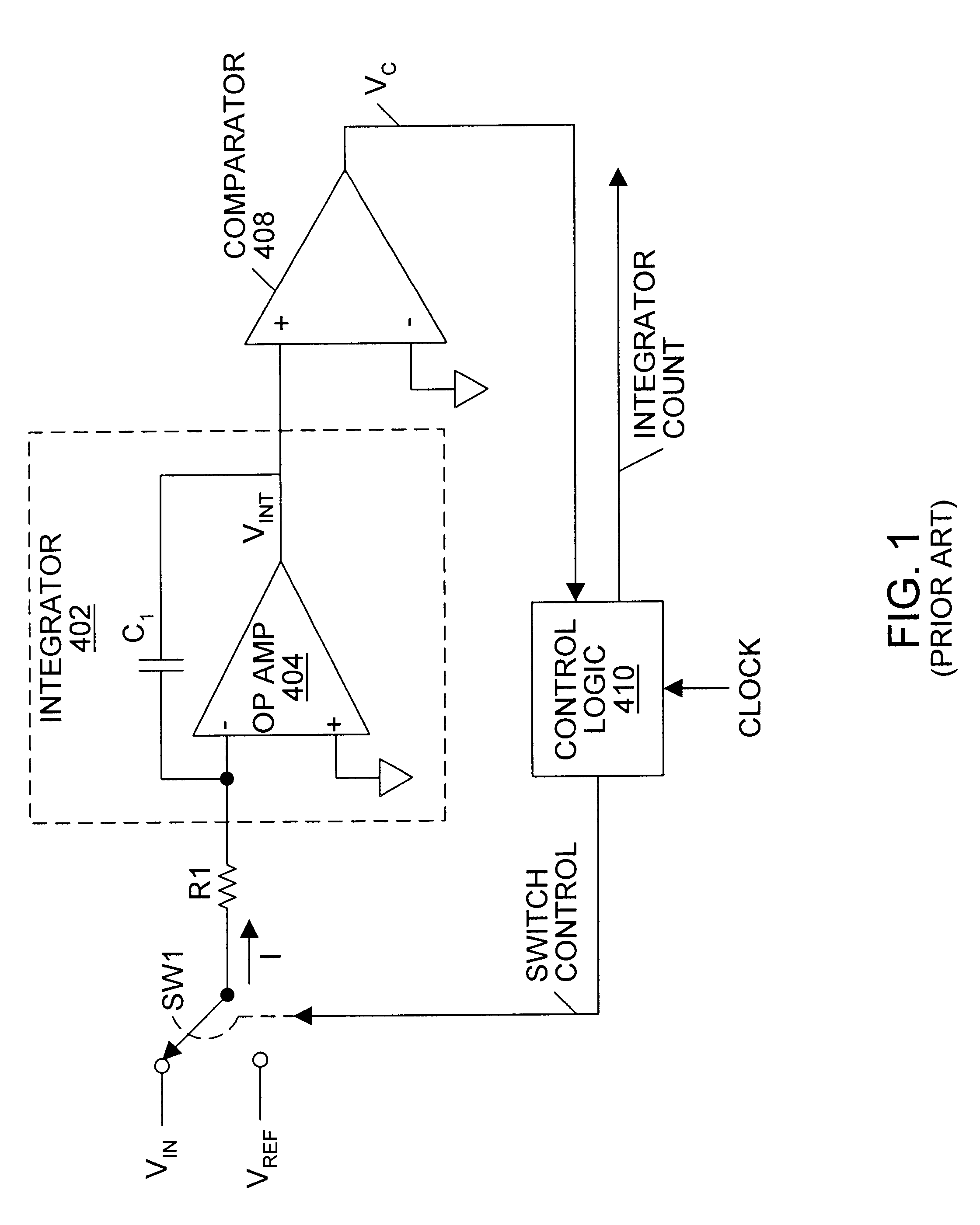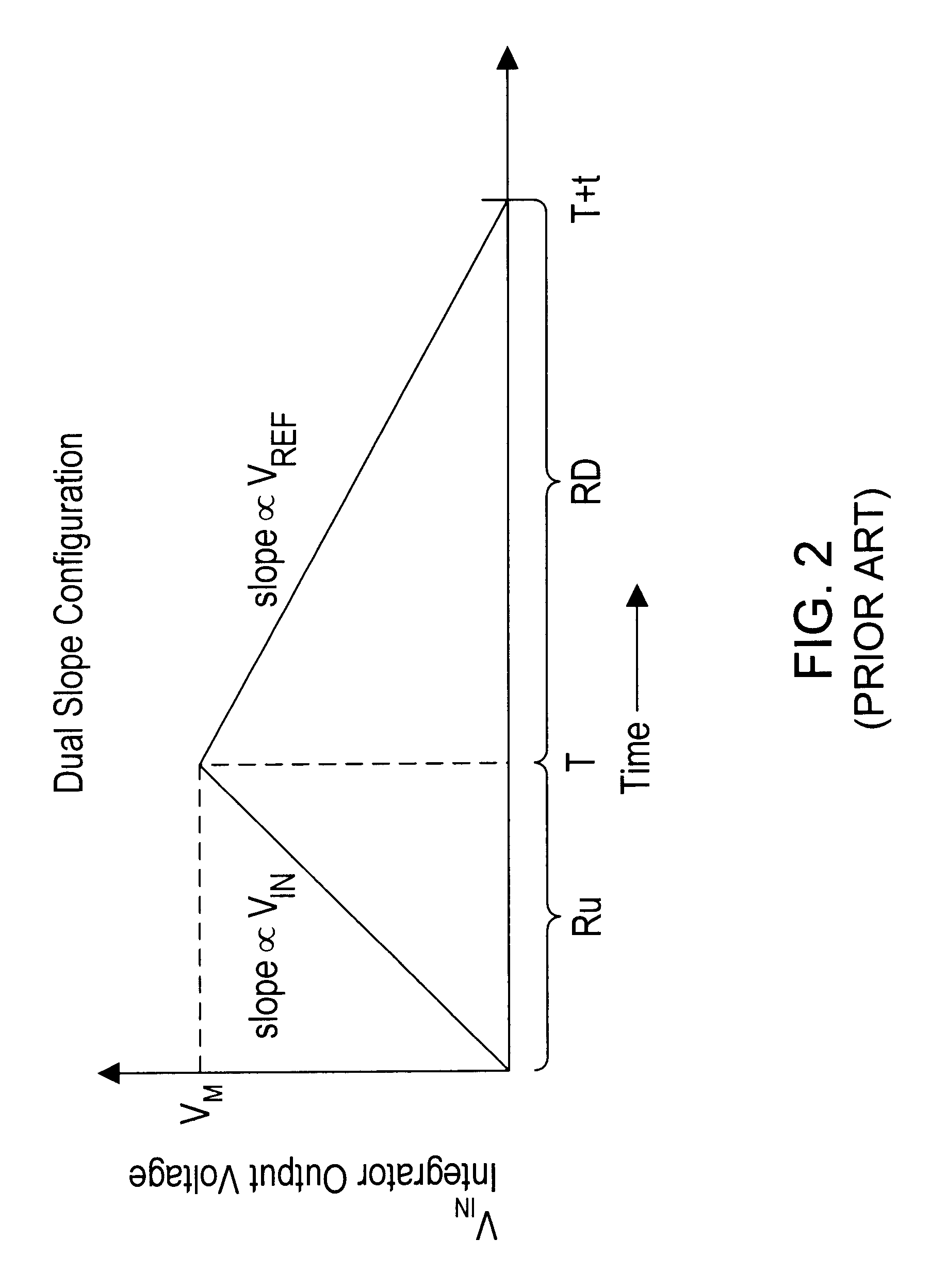Integrating analog to digital converter with improved resolution
- Summary
- Abstract
- Description
- Claims
- Application Information
AI Technical Summary
Benefits of technology
Problems solved by technology
Method used
Image
Examples
Embodiment Construction
multislope integrating ADC is similar to a dual-slope ADC except that the reference voltages are applied during a much longer ramp-up interval. Every clock cycle, typically, the output of the integrator is compared with zero (or some other voltage) to determine whether a positive or a negative reference should be applied during the next clock period. The output of the ADC is the total number of positive reference cycles minus the total number of negative reference cycles in a given integration interval, divided by the total number of clock cycles in the interval. The invention can provide increased resolution if a ramp-down interval is added to each measurement cycle. (Multislope ADCs sometimes include ramp-down intervals anyway.) A single-clock-cycle ramp-down interval may be sufficient. Integrator output measurements before and after the ramp-down give an indication of what fraction of a full positive or negative reference was necessary to reach zero volts.
In a continuously conver...
PUM
 Login to View More
Login to View More Abstract
Description
Claims
Application Information
 Login to View More
Login to View More - R&D
- Intellectual Property
- Life Sciences
- Materials
- Tech Scout
- Unparalleled Data Quality
- Higher Quality Content
- 60% Fewer Hallucinations
Browse by: Latest US Patents, China's latest patents, Technical Efficacy Thesaurus, Application Domain, Technology Topic, Popular Technical Reports.
© 2025 PatSnap. All rights reserved.Legal|Privacy policy|Modern Slavery Act Transparency Statement|Sitemap|About US| Contact US: help@patsnap.com



